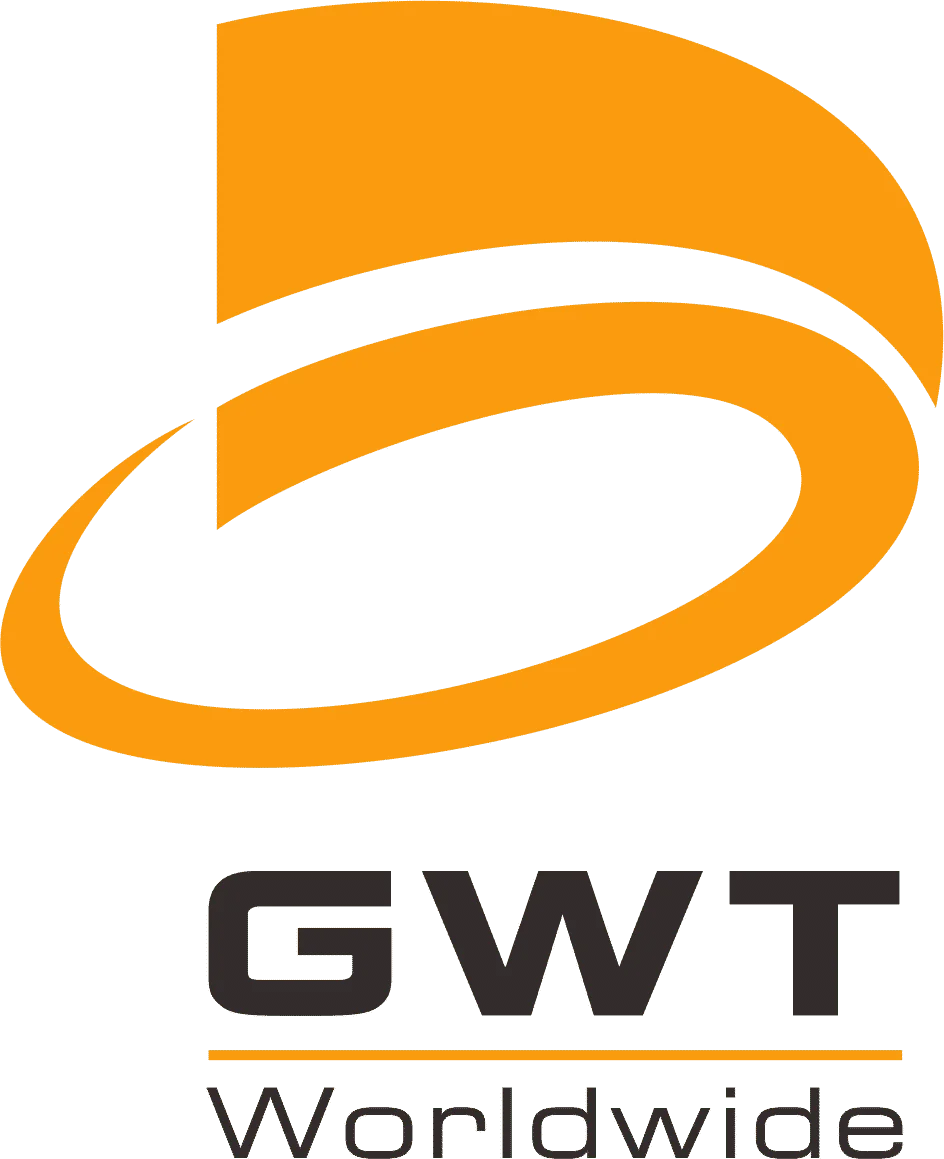Shenzhen to Japan Laptop Shipping: Air & Sea Freight Guide
By Guanwutong / October 23, 2025
Is it possible to ship a laptop directly from China to Japan?
Yes, it is definitely possible.
You have several robust options, including expedited international express delivery, cost-efficient sea freight (Full Container Load or Less than Container Load), or comprehensive freight forwarding solutions.
The Key is: You must pay special attention to lithium battery compliance (which is critical for electronics), strict adherence to Japanese import regulations, and professional packaging requirements. By selecting the optimal transport mode and preparing all necessary documentation, you can ensure a secure, efficient, and smooth shipment.
This guide will provide clear, actionable insights on choosing the best shipping method, preparing documents, ensuring compliant packaging, and estimating costs, whether for personal use or large-scale commercial purposes.
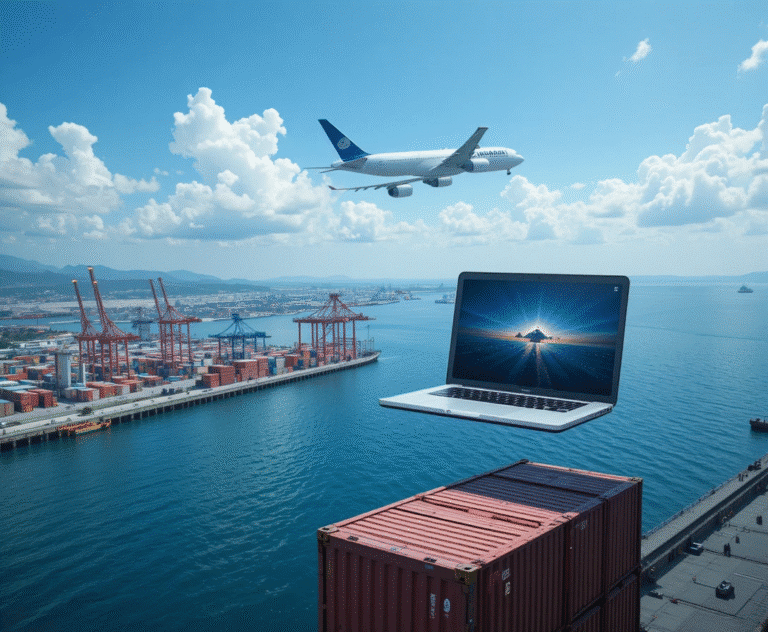
1. Shenzhen Laptop Shipping: Air Freight vs. Sea Freight – Which is Faster and More Reliable?
What is the Latest Status of Laptop Shipping Transit Times from Shenzhen?
When shipping laptops from Shenzhen to Japan, choosing the right transport mode is crucial. Air freight offers speed and convenience for small or urgent shipments, while sea freight provides cost efficiency for larger volumes. Understanding transit times, reliability, and compliance requirements will help you make the most informed shipping decision.
What are the estimated delivery timelines for small-volume laptop shipments via air freight/express?
Air freight prioritizes speed and is the preferred choice for high-value, urgent replenishment, or small-volume orders.
Small-Volume/Urgent Shipment Transit Time: Typically 2–5 days door-to-door.
For instance, through international express carriers like DHL or FedEx, most shipments from pickup in Shenzhen to customer delivery in Japan can be completed within this timeframe.
Lithium Battery Shipping Key Point: If lithium batteries are involved (usually classified as UN3481), strict adherence to International Air Transport Association (IATA) regulations is mandatory. This is the crucial factor affecting the feasibility of air transport.
You must confirm the forwarder or airline’s acceptance of DG (Dangerous Goods) cargo in advance and submit all required compliance documents (MSDS, UN38.3 report). Failure to do so may result in the goods being rejected at the airport or detained by security, incurring significant risk.
What are the latest transit times for large-volume sea freight, and how can stability be ensured? (FCL/LCL)
Sea freight is suitable for large volumes or non-urgent goods, but its transit time and stability require careful consideration.
- Full Container Load (FCL)
Door-to-door transit time (from a factory/warehouse in China to the destination in Japan) is typically 10–20 days.
This period includes direct sailing from Shenzhen to major Japanese ports (e.g., Tokyo, Yokohama), along with port operations at both ends (usually 2–3 days each) and inland delivery.
The actual time is influenced by sailing schedules, port efficiency, destination customs clearance, and last-mile delivery.
Stability is best ensured by selecting carriers known for fixed sailing schedules and direct services from Shenzhen’s Yantian or Shekou ports to major Japanese ports (Tokyo, Yokohama).
Choosing a direct route is crucial to avoid delays caused by transshipment and secondary port congestion.
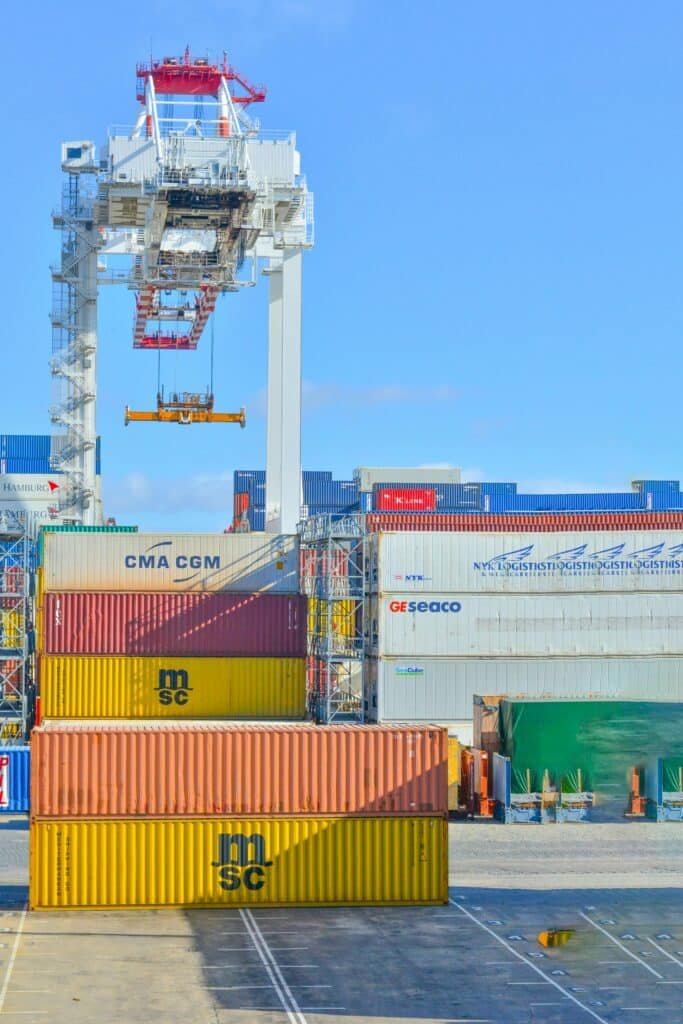
- Less than Container Load (LCL)
7–15 days is the norm. However, Door-to-door transit for LCL shipments often takes longer because goods from multiple shippers must first be consolidated into a single container at the origin, which involves checking documents, weighing, and packaging.
Upon arrival, the container must be deconsolidated at the destination port, with each shipment undergoing customs clearance and documentation review, adding extra handling and potential waiting time.
For LCL, always allocate an extra 3–5 days buffer time at the destination port, as customs clearance, inspection, and deconsolidation processes can cause unpredictable delays.
What are the overall trends and crucial decision points affecting international shipping transit times?
Latest Trend: As of 2025, competition in the air and sea freight markets around the Shenzhen port area is intense, leading to a gradual improvement in transit time stability. Many logistics providers are offering more direct and fixed-schedule routes/sailings, which helps enhance predictability. Specific “Ocean Express” or “Air Dedicated Line” services can offer stronger time guarantees.
Decision Points: Prioritize fixed-schedule, direct-port routes to minimize transshipment and waiting times. For sea freight, direct vessels are always more reliable than transshipment services.
Set Time Buffers: Allocate at least 2–3 days of contingency time to handle uncontrollable factors such as customs inspections or port congestion, ensuring delivery commitments to customers are met.
For any questions, feel free to contact GWT Shipping. Our team will provide professional, standards-compliant advice tailored to your specific needs.
2. How Should Shipping Quotes Be Compared Based on Volume to Avoid Hidden Costs?
Quotation structures and billing methods vary considerably based on the shipment volume of laptops. Choosing the right approach should align with your specific needs. Each volume tier requires a tailored pricing strategy to minimize unexpected costs and optimize overall shipping efficiency.
What are the key comparison points for small-volume (1–5 units) laptop quotes?
Common Options: International Express or Dedicated Lines (DHL, FedEx, UPS, EMS, etc.).
Billing Focus: Charges usually follow the “first weight + successive weight” model, or are based on the greater of actual weight or volumetric weight. Since laptops contain lithium batteries (classified as Dangerous Goods, DG), additional surcharges often apply.
Always confirm how the freight is calculated, actual weight, volumetric weight, or the “greater of” rule, especially as electronics tend to be lightweight but bulky.
Hidden Costs: The DG surcharge for lithium batteries is often the largest variable. Quotes based solely on weight can be misleading.
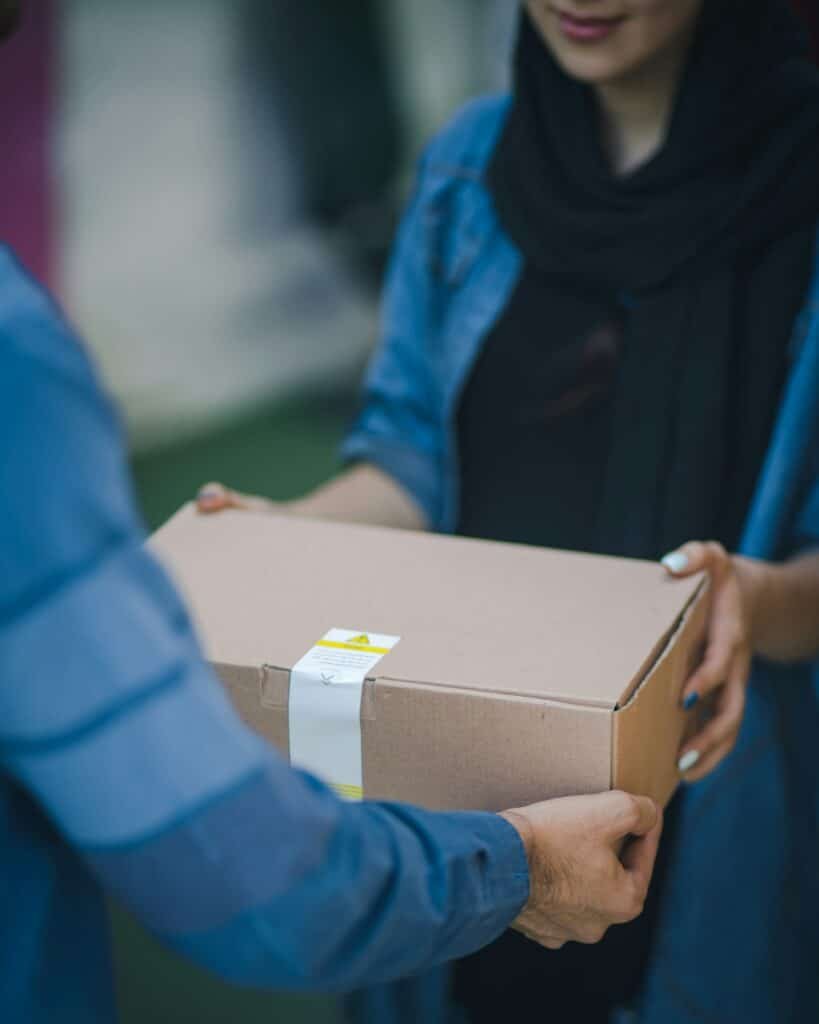
Quotation Comparison Checklist: Door-to-Door Service Fee: Confirm if the quote includes destination delivery and customs assistance. Choosing DDP eliminates the risk of your customer in Japan being surprised by unexpected customs fees or local taxes upon delivery.
Tax Handling: Verify whether the Incoterm is DDP. If so, check that the tax estimate is reasonable to avoid under-reporting followed by high charges.
Insurance & Surcharges: Confirm if the quote includes insurance premiums, fuel surcharges, peak-season surcharges, or other potential fees.
How should shipping quotes for medium-volume (6–20 units) laptops be screened?
Common Options: Consolidated air cargo (Air Freight Consolidation) / Fast LCL sea freight.
Billing Focus: Billing starts shifting towards total weight/total volume discounts, and the unit cost begins to decrease.
Quotation Comparison: Value-Added Services: Check if pre-declaration/pre-filing services are included, which effectively mitigate customs risks for medium volumes.
Continuity: How continuous are the customs clearance and delivery processes after arrival at the port, to avoid additional storage fees in Japan.
Service Level: Evaluate the forwarder’s expertise in handling lithium battery documentation and Japanese customs clearance procedures.
What core elements should large-volume (FCL or more) laptop quotes focus on?
Common Options: Full Container Load (FCL) sea freight combined with end-to-end freight forwarding services.
Billing Focus: Quotes are usually priced per container unit (e.g., 20ft or 40ft), with the primary cost driver being Ocean Freight.
Quotation Comparison: Sailing Reliability: Evaluate the stability of sailing schedules and the efficiency of terminal operations at both origin and destination ports. Request a clear breakdown of Terminal Handling Charges (THC) and Origin Receiving Charges (ORC) in addition to the base ocean freight.
Inland Delivery Cost: Trucking and last-mile delivery within Japan can be significant, often exceeding the ocean freight itself due to high labor and fuel costs. Pay close attention to these fees when comparing quotes.
Risk Coverage: Confirm the scope of insurance and the claims process. For high-value shipments like laptops, full-value insurance is strongly recommended to mitigate potential losses or damages.
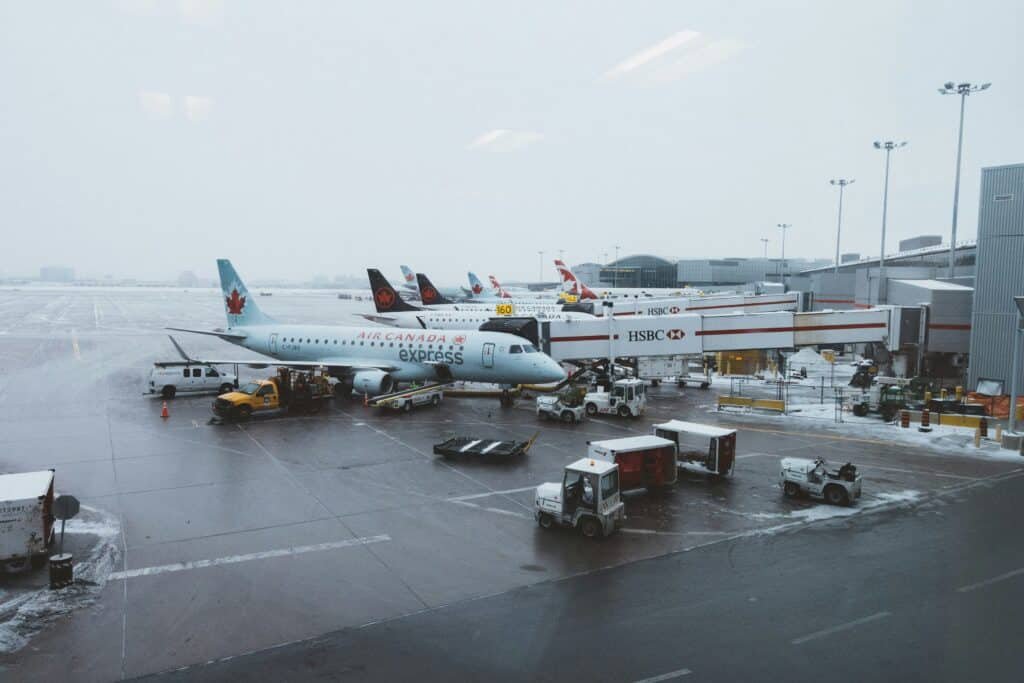
What comparison suggestions should corporate purchasers request from forwarders?
Detailed Breakdown Quotes: Forwarders must itemize fees for freight, fuel, insurance, clearance, duties/taxes, and delivery to prevent “surprises” in the final settlement.
SLA (Service Level Agreement): Demand fixed-schedule and transit time commitments with clear penalties for breach of contract.
Comprehensive Risk Contingency Plan: Such as alternative options for delays, warehousing, and re-delivery arrangements.
Priority Principle: Prioritize the “End-to-End One-Stop” (DDP) solution. Outsourcing the complexity of customs clearance and taxes to the forwarder reduces internal coordination costs and enhances control over both transit time and cost.
3. Japan Laptop Import Clearance: What are the Key Elements of the One-Stop Procurement Solution?
The one-stop clearance (DDP) solution is ideal for corporate trade with Japan, as it covers not just declarations but also risk management and efficiency assurance.
What are the core elements of the solution checklist?
Uniform HS Code
A consistent product description and Harmonized System (HS) code (8471.30) to ensure accurate and consistent classification during customs clearance. Ensure consistency between your commercial invoice and the declaration form. Laptops fall under this code; any deviation (e.g., misclassifying as parts) will trigger customs holds.
Pre-declaration/Customs Alert
Utilizing pre-filing (pre-declaration) services—submitting documents to Japanese Customs before the vessel arrives—is crucial for lithium battery cargo. It helps shorten clearance time and reduce the risk of documentation errors that could lead to cargo detention.
Time Stability
Selection of fixed schedules, fixed ports, and direct routes, along with forwarders who have sufficient customs clearance personnel.
All-Chain Insurance
Comprehensive coverage from the warehouse to the destination, integrated with inland delivery, to minimize losses and delays in intermediate links. This is critical for high-value electronics.
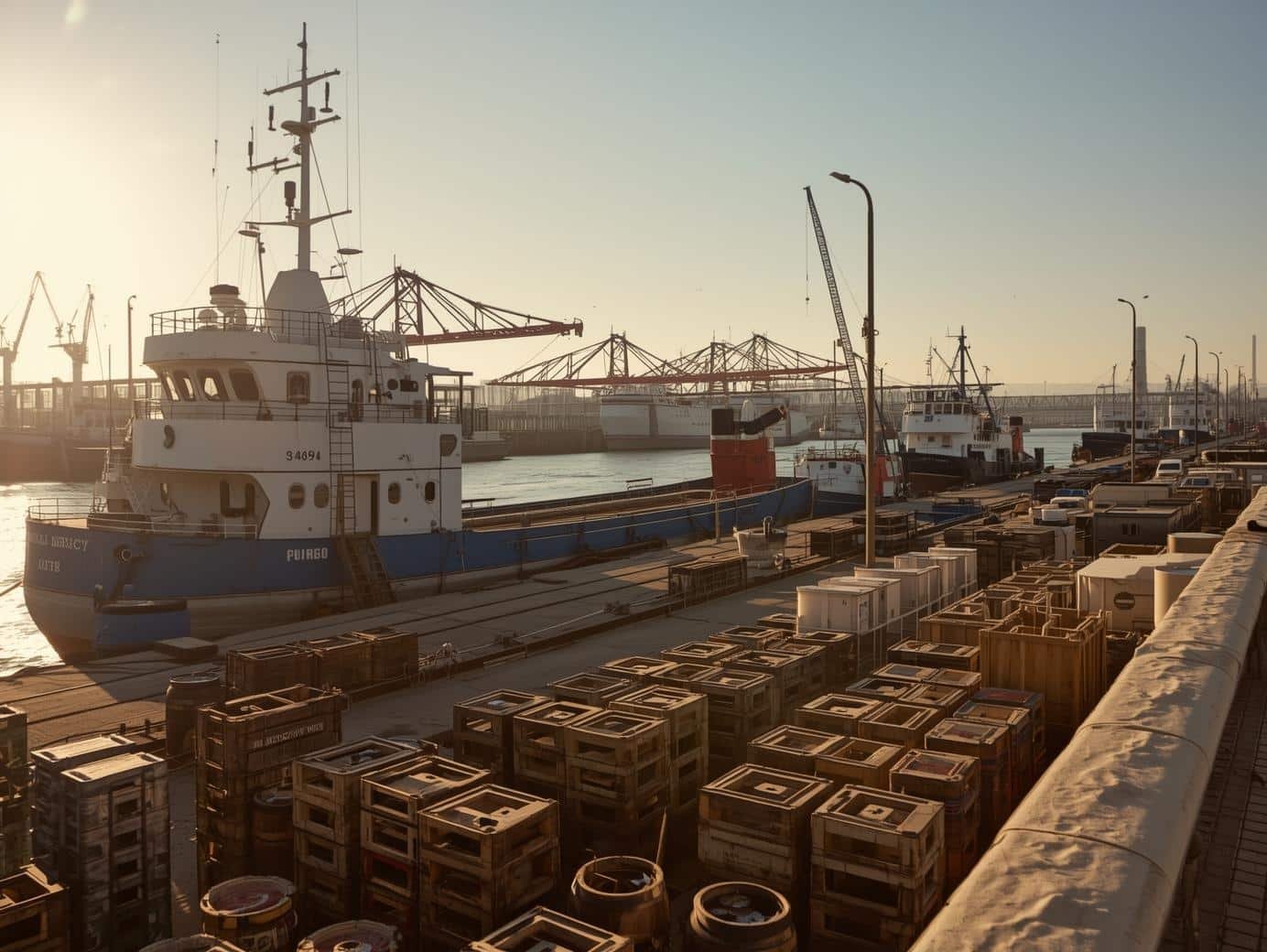
What documentation checklist should be prepared for both the forwarder and Japanese Customs clearance?
To ensure smooth customs clearance and efficient coordination with your freight forwarder, prepare the following comprehensive document package:
Commercial & Shipping Documents (for both Customs and Forwarder)
- Commercial Invoice – Must list unit price, total value, Incoterm, and currency.
- Packing List – Detailed carton count, net/gross weight, and dimensions.
- Certificate of Origin – Required if preferential tariffs apply under trade agreements.
- Bill of Lading (B/L) or Air Waybill (AWB) – Issued by the forwarder or carrier.
Compliance & Technical Documents (for Customs compliance)
- HS Code: Use the correct Harmonized System code — 8471.30 for laptops.
- MSDS (Material Safety Data Sheet): Must describe the lithium battery’s composition and hazards.
- UN38.3 Test Report: Proof that the lithium battery passed international transport safety tests.
- Battery Specification Sheet: Include watt-hour (Wh) rating, model, and type (built-in or detachable).
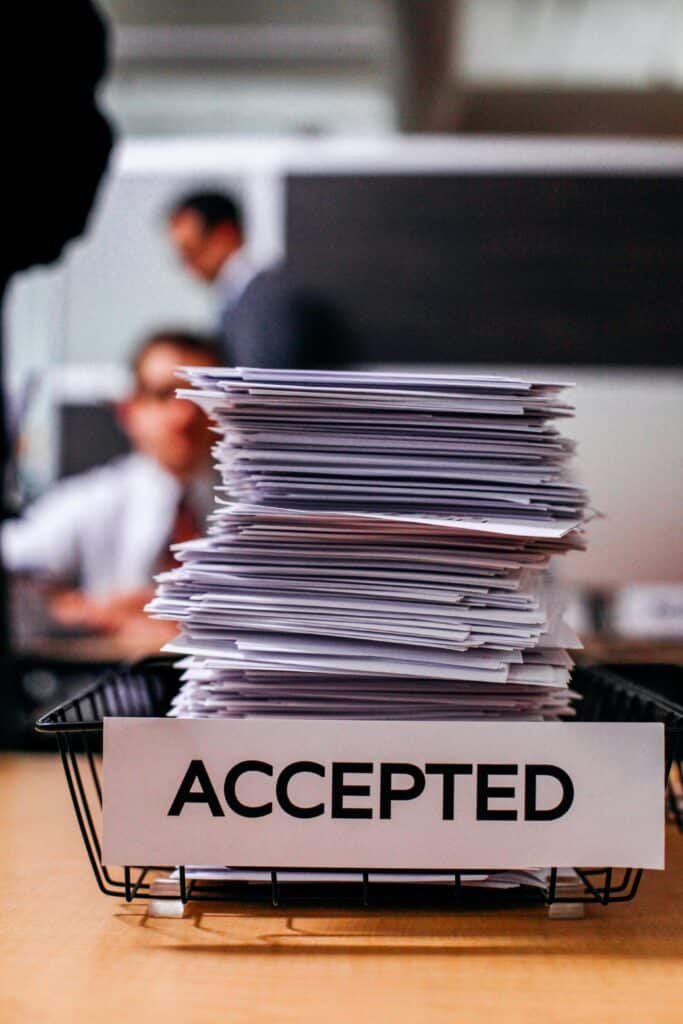
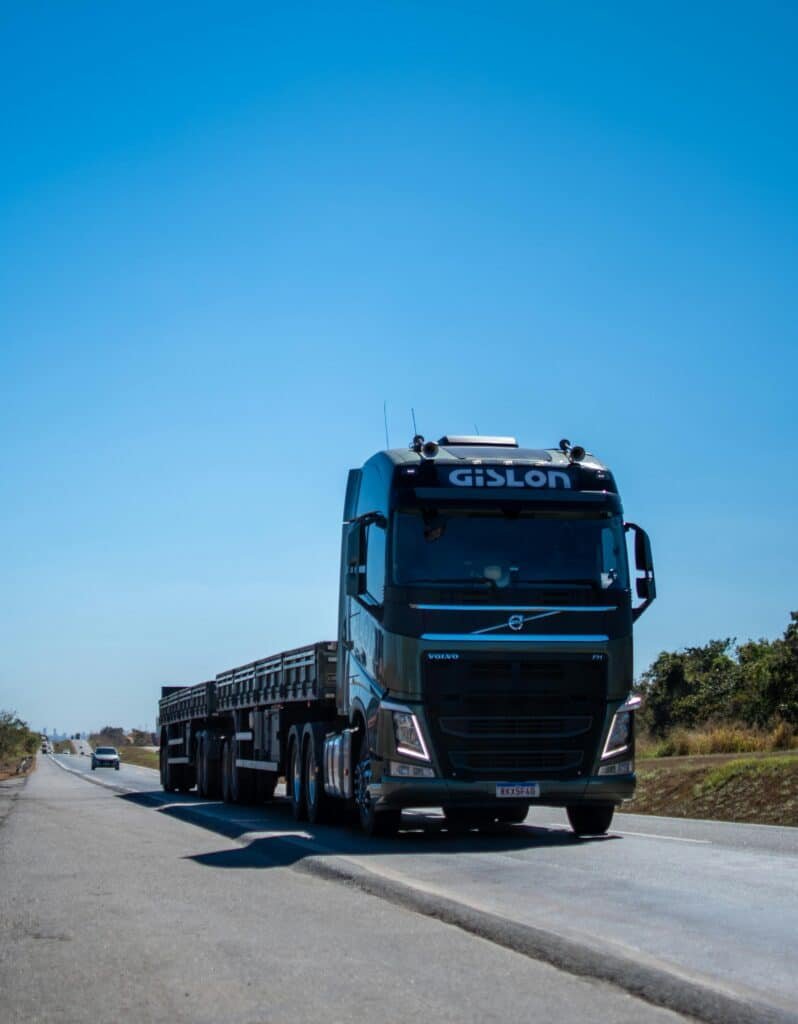
Cargo & Handling Details (for Forwarder coordination)
- Cargo Manifest / Product Specification: Clear technical details for labeling and pre-filing accuracy.
- Lithium Battery Declaration: State battery capacity, type (UN3481/UN3480), and packaging method.
- Packaging Confirmation: Anti-static, shockproof, and moisture-resistant packaging verification.
- Shipping Instructions: Delivery terms (e.g., DDP/DAP), destination address, and consignee info.
Operational & Contractual Documents (for Forwarder process control)
- SLA (Service Level Agreement): Defines transit time commitment, delay handling, and penalties.
- Insurance Certificate: If applicable, covers full shipment value from warehouse to final delivery.
- Tracking & Contingency Requirements: Frequency of status updates and emergency contact details.
What documentation checklist should be prepared for both the forwarder and Japanese Customs clearance?
To ensure smooth customs clearance and efficient coordination with your freight forwarder, prepare the following comprehensive document package:
Commercial & Shipping Documents (for both Customs and Forwarder)
- Commercial Invoice – Must list unit price, total value, Incoterm, and currency.
- Packing List – Detailed carton count, net/gross weight, and dimensions.
- Certificate of Origin – Required if preferential tariffs apply under trade agreements.
- Bill of Lading (B/L) or Air Waybill (AWB) – Issued by the forwarder or carrier.
Compliance & Technical Documents (for Customs compliance)
- HS Code: Use the correct Harmonized System code — 8471.30 for laptops.
- MSDS (Material Safety Data Sheet): Must describe the lithium battery’s composition and hazards.
- UN38.3 Test Report: Proof that the lithium battery passed international transport safety tests.
- Battery Specification Sheet: Include watt-hour (Wh) rating, model, and type (built-in or detachable).
Cargo & Handling Details (for Forwarder coordination)
- Cargo Manifest / Product Specification: Clear technical details for labeling and pre-filing accuracy.
- Lithium Battery Declaration: State battery capacity, type (UN3481/UN3480), and packaging method.
- Packaging Confirmation: Anti-static, shockproof, and moisture-resistant packaging verification.
- Shipping Instructions: Delivery terms (e.g., DDP/DAP), destination address, and consignee info.
Operational & Contractual Documents (for Forwarder process control)
- SLA (Service Level Agreement): Defines transit time commitment, delay handling, and penalties.
- Insurance Certificate: If applicable, covers full shipment value from warehouse to final delivery.
- Tracking & Contingency Requirements: Frequency of status updates and emergency contact details.
Tip: For best results, send the complete document set to your forwarder at least 3–5 working days before shipment.
This allows time for pre-filing with Japanese Customs, document cross-checking, and avoiding last-minute detentions, especially for lithium battery shipments, which are frequently inspected.
4. How to Ensure Compliant Lithium Battery Declaration to Avoid Customs Seizure?
Laptop lithium batteries (UN3481/UN3480) are the primary reason for clearance delays and rejection. Their declaration requirements are the strictest among electronic products. Compliance is non-negotiable and requires meticulous attention to detail.
What are the key declaration points for laptop lithium batteries?
| Declaration Item | Core Requirement Content | Detailed Supplement |
|---|---|---|
| Battery Specifications | Must provide battery capacity (Wh), battery type, and whether it is built-in or replaceable. | Laptop built-in batteries are usually required to be under $100\text{Wh}$ and must be marked on the battery casing. |
| Quantity and Weight | Clarify the number of individual lithium batteries, individual weight, and compliance with air/sea maximum limits. | IATA imposes strict limits on the total number of battery packs and cells per shipment. |
| Packaging and Labeling | Confirm whether shipped with the equipment, whether packaged separately, and compliance with UN3481 packaging specifications, including correct DG (Dangerous Goods) labeling. | Must use specific Battery Handling Labels and Lithium Battery Marks. |
| Document Support | Must provide the battery's MSDS (Material Safety Data Sheet) and UN38.3 Test Report. | These documents must be issued by a qualified laboratory to certify the battery's safety and suitability for transport. |
These reports are a must. Without them, no legitimate air carrier will accept your shipment, and customs will reject the declaration immediately.
How should precautions for lithium battery transport be expanded?
Air Transport is the Strictest
Air freight mandates the strictest compliance standards, especially for lithium batteries. Any non-conformity in documentation, packaging, or labeling may lead to the shipment being rejected at the originating airport (e.g., Shenzhen or Hong Kong), not just detained upon arrival in Japan.
Such rejections result in immediate financial loss, costly rebooking, and severe delivery delays. Therefore, strict control over battery quantity, watt-hour rating, and all compliance documentation is essential before export.
Battery State Requirement
Before transport, the battery charge level must be around 30% (the “Safe Transport State of Charge”). This is a critical safety measure to prevent thermal runaway. Your manufacturer must confirm this state before packing.
Risk Diversification Strategy
For large FCL shipments or multiple cartons, work with your forwarder to package and declare batteries and equipment separately. Independent packaging and declarations help distribute risk and simplify inspection, reducing potential delays if a single carton or item is selected for customs examination by Japanese authorities.
5. Shenzhen Surrounding Ports Route Analysis: Where is the Best Port of Departure?
Shenzhen and its surrounding ports (Guangzhou, Xiamen, Hong Kong) form a major logistics hub in South China, offering extensive sea and air freight services with direct routes to major Japanese ports, each with distinct advantages.
This table compares key Shenzhen-to-Japan shipping routes, their ports, and main advantages for different shipment needs.
| Route Type | Common Departure Ports | Major Japanese Destination Ports | Route Characteristics & Advantages |
|---|---|---|---|
| FCL Sea Freight | Shenzhen (Shekou/Yantian) | Tokyo, Yokohama, Nagoya, Kobe | Good time stability, lowest cost, suitable for large volumes, requires strict adherence to sailing schedules and warehousing. |
| LCL Sea Freight | Shenzhen/Guangzhou/Xiamen | Major Japanese Ports | More flexible, suitable for small to medium volumes, requires attention to LCL scheduling and customs clearance time fluctuations. |
| Air Freight/Express | Shenzhen Airport/Hong Kong Airport | Tokyo Narita/Osaka Kansai Airport | Fastest transit time, suitable for small volumes and urgent shipments, but highest cost, strictest lithium battery compliance. |
What is the recommended route decision strategy?
Corporate Procurement (FCL): Prioritize the FCL combined with a one-stop clearance solution to ensure cost and time control. Due to the dense routes, Shenzhen Port often offers more competitive freight rates and sailing options. So we can leverage Shenzhen Port for its high density of direct sailings to lock in competitive cost and schedule reliability.
Individual/Small Sellers (Air/Express): Prioritize air or express shipping. Utilizing the international cargo capacity of Hong Kong Airport, in particular, may secure more favorable air freight prices and greater capacity for lithium battery shipments during certain periods. It often provides smoother processing and more slot availability for DG cargo.
Kesimpulan
Successful shipment of laptops from Shenzhen to Japan hinges on strict compliance with UN3481 standards, selecting the right transport mode for your shipment size and urgency, and leveraging DDP services to minimize customs and tax risks. Always account for DG surcharges and Japan’s high inland trucking costs.
By working closely with a reliable freight forwarder and ensuring proper documentation, you can achieve cost predictability, delivery reliability, and full regulatory compliance across every shipment.
Self-Checklist for You (Operational Implementation)
| Category | Self-Check Item | Nota |
|---|---|---|
| Origin & Volume | Origin port, destination port/airport, and volume tier are clearly defined. | Determines the most suitable transport mode. |
| Lithium Battery Compliance | Battery capacity, quantity, packaging method, MSDS/UN38.3 report are complete. | Must be prepared before shipment. |
| Shipping Preference | Opting for End-to-End One-Stop Clearance (DDP)? Need fixed schedules and real-time tracking? | DDP provides the best experience for the Japanese consignee. |
| Dokumentasi | Is the checklist complete: Invoice, Packing List, Certificate of Origin, Technical Specifications, etc.? | Ensure all document information is consistent. |
| Risk Protection | Need for additional insurance? Need for a contingency plan (e.g., alternative route for transit disruption)? | Full insurance is highly recommended for high-value goods. |
Soalan Lazim
The transit time depends entirely on the chosen mode. Air Express services (like DHL or FedEx) are the fastest, typically taking 2–5 days door-to-door. FCL Sea Freight offers the best cost efficiency, usually taking 10–20 days door-to-door on direct routes. Currently, the reliability of fixed schedules has improved, but customs and port congestion can still add 2-3 days of unpredictability.
For Small Volumes (1-5 units), the primary focus must be on confirming the inclusion of the DG surcharge for lithium batteries and verifying that the quote is DDP (Delivery Duty Paid) to prevent your customer from facing unexpected Japanese Consumption Tax. For Large Volumes (FCL), look beyond the base Ocean Freight. Compare the inland trucking costs in Japan and Terminal Handling Charges (THC/ORC), as these local fees can significantly inflate the total landed cost.
Generally, laptops (HS 8471.30) are subject to zero customs duties when imported into Japan, though this can vary depending on the country of origin and trade agreements. However, Japanese Consumption Tax (currently 10%) must be paid. This tax is calculated on the CIF value (Cost + Insurance + Freight) plus any customs duty, using the formula:
Consumption Tax = (CIF value + Customs Duty) × 10%
For most laptop imports, this means the tax is 10% of the total CIF value. The amount is usually handled by the shipper under DDP (Delivered Duty Paid) terms, ensuring the recipient doesn’t face unexpected charges.
Air freight/Express typically takes 2–5 days door-to-door. FCL sea freight usually takes 10–20 days door-to-door. Transit time stability has improved due to the availability of more fixed-schedule direct routes.
International express relies on Air Transport, governed by the highly stringent IATA/ICAO regulations. These rules are designed to prevent catastrophic fire hazards in the air, classifying lithium batteries as Dangerous Goods. Sea freight, governed by IMDG code, is less strict but still requires proper labeling and documentation. The severe nature of an aircraft fire necessitates stricter compliance checks for air cargo.
Quotes for small volumes should focus on the DG surcharge and DDP tax handling. Quotes for large volumes should focus on Ocean Freight stability and inland trucking costs in Japan.
A one-stop solution aims for seamless delivery. Key points include: 1) Utilizing pre-declaration services to reduce clearance time by pre-vetting documents. 2) Ensuring the correct declaration using the uniform HS code (8471.30). 3) Securing a comprehensive all-chain insurance policy that covers the entire journey, including customs storage. This minimizes logistical burden and risk for the buyer.
Declaration must include the battery’s Wh capacity (≤100 Wh), type, and whether it is installed in the device. Batteries must be shipped in UN-certified packaging with the correct Dangerous Goods (DG) labels. Mandatory safety documents, including the MSDS and UN38.3 Test Report, must be provided. A critical precaution is ensuring the battery is charged to the safe transport level of around 30% before final packing.
DDP (Delivered Duty Paid): Shipper covers all costs (freight, insurance, clearance, duties, and consumption tax) until delivery. Easiest for the consignee.
DAP (Delivered At Place): Shipper covers freight, but excludes duties and consumption tax. The consignee (Japanese buyer) handles clearance and tax payment at the destination.
DDP shifts the entire tax, clearance, and delivery liability onto the shipper/forwarder. For small sellers, this is crucial because it prevents the Japanese customer from being hit with an unexpected 10% Consumption Tax bill upon delivery. If the customer refuses to pay, the cargo becomes instantly “stuck” at the port, creating massive reverse logistics or disposal costs for the seller.
Yes, laptops as sensitive electronics, must be protected by anti-static bags (or ESD-safe materials). The outer carton must be UN-certified (if shipping standalone batteries) or at least highly durable, multi-layered cardboard with ample shock-absorbing cushioning (foam or bubble wrap) to prevent movement and damage during transit.
Pre-declaration means the forwarder submits all clearance documents to Japanese Customs before the cargo arrives. Benefits include shorter clearance time and reduced risk of port detention, as documentation issues can be resolved proactively.
For FCL sea freight, Shenzhen Ports (Yantian/Shekou) offer the lowest cost and stable schedules, with direct sailings to major Japanese ports—ideal for high-volume shipments. For air freight, Shenzhen and Hong Kong Airports provide the fastest transit (typically 2–5 days). Hong Kong Airport is particularly advantageous for DG cargo due to fewer operational restrictions on lithium batteries, greater international cargo capacity, and more reliable slot availability, though costs are higher and compliance requirements are stricter.
Ready to streamline your Shenzhen-to-Japan laptop shipping and ensure smooth, compliant, and cost-effective deliveries?
Logistics Expert Tip: Implement a tiered strategy: use LCL Sea Freight for routine bulk stock and leverage Air Freight for safety stock or urgent restock needs.
Sellers should aim for inventory coverage of 60-90 days in transit and at the FC to mitigate delays caused by the Cook Strait.
